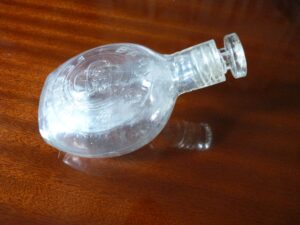Denise North came to speak to the Friends and as usual with Denise we were treated to a well researched and entertaining account of “A century of Health in Burnley from 1815-1918”.
She spoke about the development of sanitation in the town as the population grew. The small number of inhabitants in 1815 drew its water from a well, then, as it expanded they used the river and the canal, but until the 1860’s there was no sanitation and consequently Burnley suffered very high death and infant mortality rates. With such shocking statistics something had to be done and the latter part of the 19th century saw many beneficial measures developed and put in place:-
Christopher Slater became Burnley’s first Sanitary Inspector
Research into the origins of disease got underway.
In 1871 a sewage works was built
The paving of rivers helped water to run faster and avoid stagnation
The height of mill chimneys was raised
The automatic slop water closet was replaced with the more hygienic Ducketts toilets
Antiseptic procedures were introduced in surgery
A workhouse was built in 1876, which went on to become Burnley General Hospital and Burnley Victoria Hospital was built by public subscription.

Baby Feeder. Attribution: Denise North
We learnt of the “murder bottles” which mothers used to feed their babies and how they would contract diarrhoea and how only three out of every 10 babies survived beyond the age of two. Once the cause was identified, safer feeding bottles were sold and initiatives like baby competitions were introduced to encourage cleanliness, alongside schooling for mothers.
In 1918 Burnley Council bought Bank Hall and made it into a maternity hospital.
Denise introduced us to the key names in Burnley’s health revolution and spoke of their tireless efforts to improve Burnley’s health record.